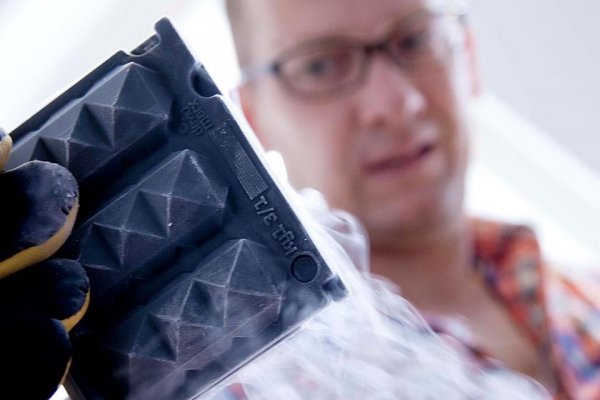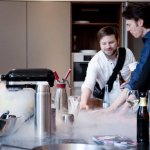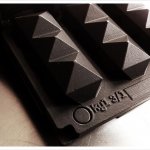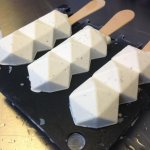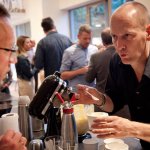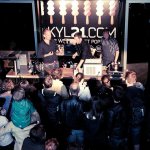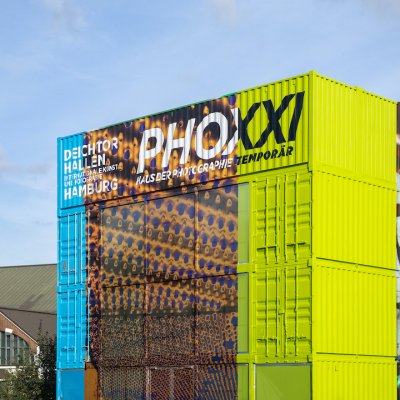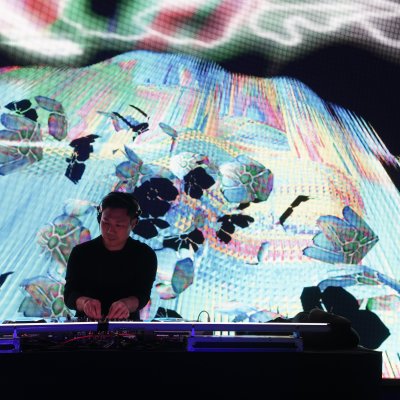BERLIN · "it all began almost exactly four years ago. it was hot, just like today. I had a desire for refreshment and grabbed the nearest Magnum ice cream. only it did not provide the cooling effect I was looking for. is it impossible for ice cream to be empowering, vitalizing, even healthy, I thought?”
yes, it might sound like the beginning of a pastel-coloured 90's commercial with cut-offs, tennis headbands and sketchy moustaches. but actually it is an insight into the initial thoughts of David Marx, designer, founder and CEO of The Science Kitchen, which would then catapult a thorough search for knowledge on how to improve the ice cream industry.
unsatisfied with the existing ice cream supply and its market, ice cream packs in supermarkets infused with 60% air and high amounts of fat and sugar, he decided he wanted to create a product that differentiated from the same basic body other ice creams were built on. this would prove to be a difficult task:
“the main issue, which has been around since the day ice cream was invented about hundred years ago, is that the creation process is texture-oriented. I wanted to focus on ingredients, taste and think recipe-oriented instead, but was confronted with obstacles within the water cell, which others had solved by adding fat, sugar and air."
when frozen, the water cell expands while everything else shrinks, which destroys the cell and displaces the ingredients to the outer layer of the cell. "it is tricky to work with and complicates a healthy end result. but it had to be possible to solve this riddle…” David adds.
thanks to methods from the molecular and avant-garde kitchen, a domain highly influenced by one of the best chefs in the world, Feran Adrià, David dealt with the problem of the crystalline effect by applying liquid nitrogen of 196 minus degrees in the process of freezing. thereby the water cells have no time to expand and additives become unnecessary. David and chef de cuisine, Hannes Rütz, can then proceed to work by deciding themselves what to mix into the bowl and not letting this be governed by much else than their taste buds. this is also guaranteed by the fact that everything is cooked and handmade without machinery.
“if we add sugar, it is birch sugar or coconut blossom syrup or sugar extracted from the coconut blossom. these are high quality products with low calories, fit for diabetics and make splendid seasoning. the difference is that we do not need 30% sugar in the making, but perhaps 5% depending on the type of ice cream – you have to be aware of yoghurt’s sour taste for an example,” David notes.
when choosing the ingredients, David turns to BIO products and Fairtrade, e.g. “Original Beans”, yoghurt from “Lobetal” (a workspace for people with disabilities), fruits from plantations in Belgium and mango purée from India. but the BIO/Fairtrade world is not perfect. “it denies hardworking farmers certificates due to their fruits being ‘too small’, so you cannot always equal fairness with stamps”, David says, which is why he relies even more on personal relationships and micro-scaled purchases.
the resulting BIO, vegan and lactose free KYL21 popsicles, a name inspired by the Swedish spelling of ‘molecule’ (molekyl), look like something that has either landed from Mars or is designed to travel there. a futuristic shape for an ice cream of the future. with a background in product design he wanted to stray away from the typical stainless steel ice forms in the industry and create a visual wow. furthermore, the angular shapes enable air to move in as you work your way from one stage to the other, enhancing the taste intensity of featured ingredients like the etheric oils from mint, thymine and rosemary.
because David and his chefs work after the puritan principle “if it is not possible (yet), we will not do it” (no additives, no artificial flavouring), we will have to wait a little for this fall’s flavor (or fragrance): a pumpkin base with bittersweet chocolate, thymine and orange juice. it sounds like it is worth the wait!
till then, you can drop by the KUNSTHALLE Berlin and see what is in store.
photos: from The Science Kitchen's archive.
contributed by Martina Antunovic


